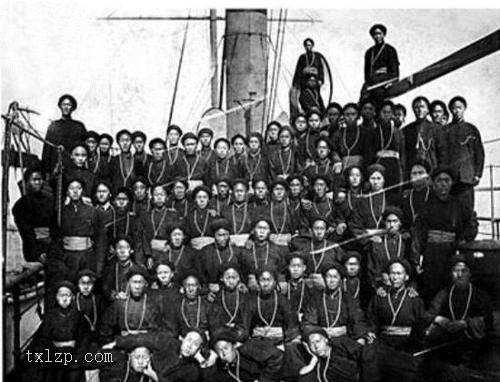[Drawing Axis of Emperor Qianlong Playing Qin by Zhang Zongcang]
Drawing Axis of Emperor Qianlong Playing Qin by Zhang Zongcang in the Qing Dynasty, paper edition, ink and wash, 194 centimeters vertically and 159 centimeters horizontally
Recognition: “Painted by Zhang Zongcang, a minister of the Qianlong and Guiyou Qing dynasties and the month minister.” The next seal is two Zhu Wenfang seals, “Zhang” and “Zongcang”. “Guiyou” refers to the 18th year of Qianlong (1753), when Emperor Qianlong was 43 years old. On the upper right of the painting, Emperor Qianlong inscribed a five-character poem: “In the midst of pines, rocks, and flowing springs, it is overcast and cold in summer. The idea is to sit on a platform and float across the width of the clothing. Those who can do their best, while those who work take advantage of this leisure. It is said that it is appropriate to enter the painting, and bandits admire the bamboo skin crown. It is inscribed on the summer day of Guiyou.” The lower seal is “Tao Ye Lai Poetry”, printed in Zhu Wen Fang, and “Qian Long Chen Han”, printed in Bai Wen Fang. This poem is the same as the inscription on the axis of “The Painting of Emperor Qianlong’s Pine Shady Brush” painted by Zhang Zongcang in the same year. The seal on this painting is printed by the Jiaqing Imperial Court, including “Jiaqing Imperial Treasure”, “Shiqu Treasure Collection”, “Three Collections of Treasure Collection”, “Jiaqing Appreciation”, “Sanxi Tang Jingjian Seal”, and “Yizi”, totaling 6 sides
Compared to Dong Bangda’s “The Painting of Emperor Qianlong’s Pine Shade Relieving Summer” in the Palace Museum, this painting is very similar in size, texture, composition, brushwork, and even the facial expression of Emperor Qianlong. As can be seen from the yellow label affixed to the head of Dong’s painting, “Hanging on the east wall of the East Pavilion in the Chengguan Zhai Hall to the west”, and the seal “Summer Resort” on the drawing, Dong’s painting did not exist in the Forbidden City Imperial Palace like Zhang Zongcang’s painting, but was hung in the Chengguan Zhai Hall in the Summer Resort, an important palace of Emperor Qianlong. This shows how much Emperor Qianlong attached importance to and loved the theme of entertainment that represented his tea tasting and summer relaxation
Emperor Qianlong was influenced by the Han and Manchu cultures from an early age, and had a profound cultural heritage. He yearned for the various ideal realms pursued by Han literati, and ordered court painters to create many works that represented his elegant life, such as tasting tea under the pine trees in spring, watching the lotus and enjoying the cool in midsummer, fuming and playing the piano in autumn, appreciating snow and chanting poetry in winter, or collecting snow and cooking tea. Some of these were his own personal entertainment activities, while others were his ideal state of entertainment, This picture is an imaginary work created by Zhang Zongcang, a court painter, who was instructed by him to leave the world and enjoy himself in the mountains
![图片[1]-Zhang Zongcang Emperor Qianlong’s Drawing Axis of Playing Qin-China Archive](https://chinaarchive.net/Warring States period/painting/54322[1024].jpg)



![[Qing Dynasty] British female painter—Elizabeth Keith, using woodblock prints to record China from the late Qing Dynasty to the early Republic of China—1915-China Archive](https://chinaarchive.net/wp-content/uploads/2022/11/image-191x300.png)

